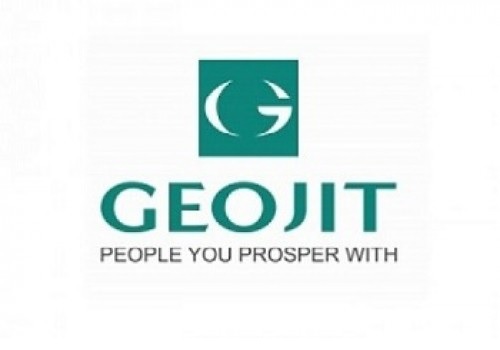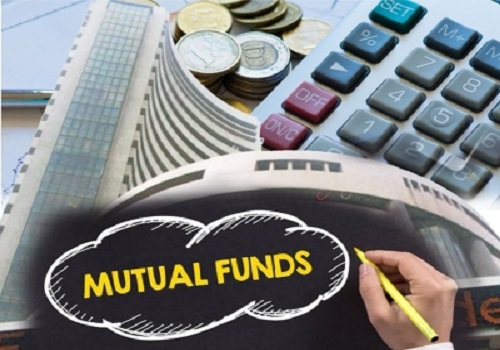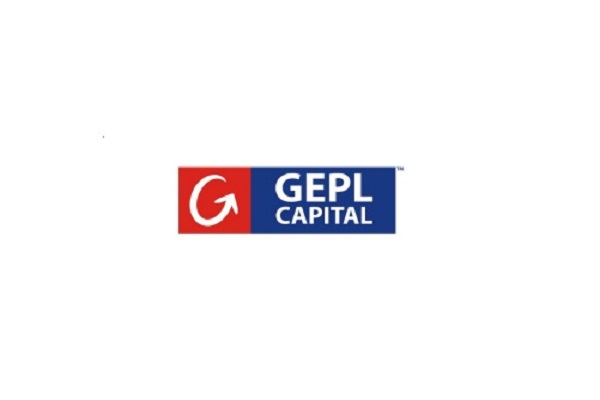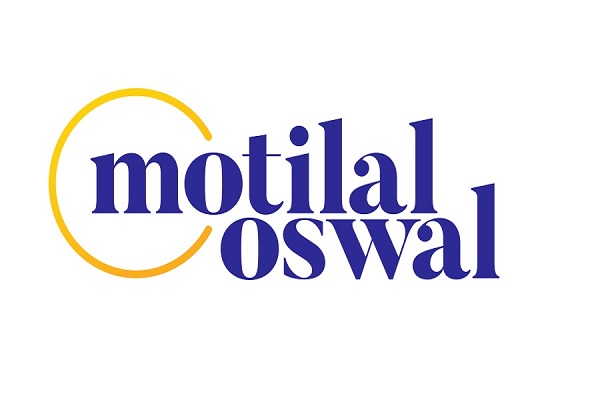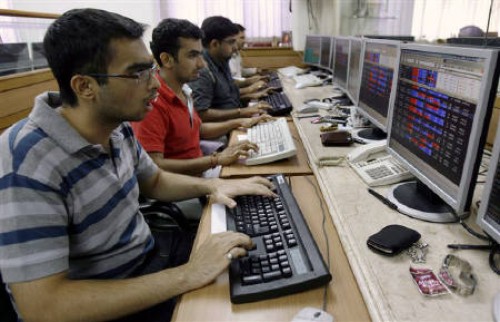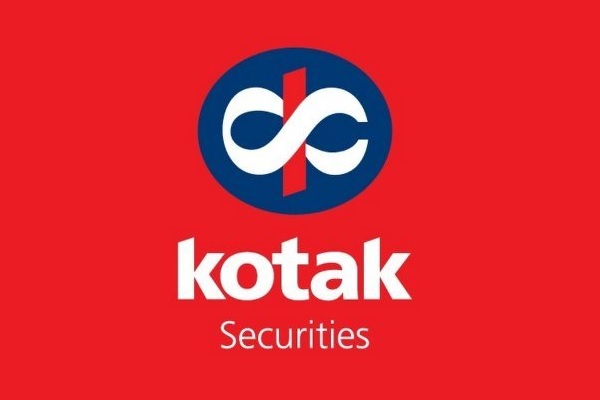Cottoncandy trading range for the day is 52120-53120 - Kedia Advisory

Gold
Gold prices edged up by 0.1% to settle at 87,638 as renewed concerns over U.S. tariffs fueled demand for the safe-haven asset. President Donald Trump's latest remarks on automobile tariffs created uncertainty, supporting gold prices. Additionally, Bank of America raised its gold price forecasts significantly, now expecting $3,063 per ounce in 2025 and $3,350 per ounce in 2026, citing ongoing trade policy uncertainties. China’s gold imports through Hong Kong rose by 7.5% in February, reflecting sustained demand from the world’s largest gold consumer. However, India, another key market, saw record-high prices dampening demand, with gold imports plunging 85% year-on-year to a two-decade low. Dealers in India increased discounts to $41 per ounce, the highest in over eight months, amid weak jewellery demand. Meanwhile, premiums and discounts varied across other major hubs, with Singapore and Hong Kong maintaining small premiums, while Japan showed a mix of discounts and premiums. From a technical perspective, the market showed signs of short covering, with open interest dropping by 23.64% to 5,835 while prices gained 84 rupees. Gold has immediate support at 87,410, and a decline below this level could test 87,180. On the upside, resistance is seen at 87,885, and a breakout above this level could push prices toward 88,130.
Trading Ideas:
* Gold trading range for the day is 87180-88130.
* Gold gains as concerns over the Trump administration's fresh tariffs boosted safe-haven demand.
* Investors worried that Trump's tariffs would stoke inflation and hinder economic growth
* BofA expects gold to trade at $3,063 per ounce (oz) in 2025 and $3,350/oz in 2026.
Silver
Silver prices gained 0.34% to settle at 99,486 as trade uncertainties and economic concerns supported safe-haven demand. Optimism around a more targeted approach to U.S. tariffs ahead of the April 2 deadline provided some relief to markets. Additionally, expectations of further rate cuts from the Federal Reserve boosted silver sentiment, with traders pricing in two quarter-point cuts in June and September, and a potential third cut in December. Chicago Fed President Austan Goolsbee emphasized that while rates are expected to be significantly lower in 12-18 months, lingering economic uncertainty could delay the next cut. The silver market is projected to remain in deficit for the fifth consecutive year in 2025. Industrial demand remains the primary driver, expected to reach a new record high of over 700 million ounces. Despite stable overall demand at 1.20 billion ounces, growth in industrial applications and retail investment will offset weaker jewelry and silverware demand. Jewelry demand is forecasted to drop by 6%, with India leading the decline due to high domestic prices. On the supply side, total global silver output is set to increase by 3% to an 11-year high of 1.05 billion ounces, with mine production expected to reach a seven-year high of 844 Moz. Technically, silver saw fresh buying interest, with open interest rising by 1.05% to 19,508 while prices gained 333 rupees. Immediate support is at 98,990, with further downside potential to 98,500. Resistance is at 100,045, and a breakout above could push prices toward 100,610.
Trading Ideas:
* Silver trading range for the day is 98500-100610.
* Silver prices strengthened as trade uncertainties and broader economic concerns fueled demand for safe-haven.
* New orders for manufactured durable goods in the US unexpectedly increased $2.7 billion or 0.9% month-over-month.
* US consumer confidence fell to its lowest level in over four years, highlighting growing concerns among households.
Crude oil
Crude oil prices surged by 1.22% to settle at 5,991, driven by growing concerns over tighter global supply. The U.S. threat of imposing tariffs on nations purchasing Venezuelan crude, along with fresh sanctions on China’s Iranian oil imports, added to market volatility. Additionally, American Petroleum Institute data revealed a significant drop in U.S. crude inventories by 4.6 million barrels, signaling strong fuel demand. However, oil price gains were limited as the U.S. reached agreements with Ukraine and Russia to de-escalate tensions and considered easing certain sanctions on Moscow. The latest U.S. Energy Information Administration (EIA) report further reinforced bullish sentiment, showing a sharper-than-expected decline in crude inventories by 3.341 million barrels, surpassing the forecasted 1.6 million draw. Crude stocks at the Cushing, Oklahoma, hub also declined by 0.755 million barrels. Gasoline inventories fell by 1.446 million barrels, while distillate stocks dropped by 0.421 million barrels, both deviating from expectations. Despite short-term bullish factors, the International Energy Agency (IEA) warned that global oil supply could outpace demand by 600,000 barrels per day in 2025, with the surplus potentially growing to 1 million barrels per day if OPEC+ fails to manage production effectively. Technically, the crude oil market witnessed fresh buying, with open interest rising by 8.5% to 5,835. Immediate support is at 5,947, with further downside potential to 5,904. Resistance is now seen at 6,034, and a breakout could push prices toward 6,078.
Trading Ideas:
* Crudeoil trading range for the day is 5904-6078.
* Crude oil gains as US tariff threat on Venezuelan crude sparked increased global supply concerns.
* Crude oil inventories in the US fell by 3.341 million barrels - EIA
* U.S. crude inventories fell by 4.6 million barrels last week - API
Natural gas
Natural gas prices rose by 1% to settle at 333.9 as Freeport LNG’s Texas export plant resumed operations following a temporary shutdown due to a lightning strike. The restart is expected to boost gas flows to LNG export facilities, with March exports averaging 15.7 billion cubic feet per day (bcfd), surpassing February’s record of 15.6 bcfd. The increase comes as Venture Global’s Plaquemines LNG plant in Louisiana begins operations, further supporting export demand. Meteorologists forecast above-normal temperatures across the Lower 48 states through April 9, which could lower heating demand and allow utilities to build up storage. U.S. utilities added 9 billion cubic feet (bcf) to gas storage for the week ending March 14, significantly above the expected 3 bcf increase. This marked the first inventory build since November 2024, with a notable 28 bcf injection in the South Central region offsetting withdrawals in the East, Midwest, and Pacific regions. The U.S. Energy Information Administration (EIA) projects both natural gas output and demand to hit record highs in 2025. Dry gas production is expected to rise to 104.6 bcfd in 2025 and 107.3 bcfd in 2026, while domestic consumption is forecasted to reach 90.7 bcfd in 2025 before slightly declining in 2026. Technically, the market is witnessing short covering, with open interest dropping by 3.38% to 8,627 while prices gained 3.3 rupees. Immediate support is at 329.1, with further downside potential to 324.3, while resistance is at 339.6, with a breakout potentially testing 345.3.
Trading Ideas:
* Naturalgas trading range for the day is 324.3-345.3.
* Natural gas climbed as Freeport LNG’s Texas export plant resumed operations.
* Meteorologists predict above-normal temperatures across the Lower 48 states through April 9, likely reducing demand.
* Average gas output in the Lower 48 has climbed to 106.0 bcfd so far in March, surpassing February’s record 105.1 bcfd.
Copper
Copper prices declined by 0.76% to settle at 910, as concerns over potential U.S. tariffs weighed on sentiment. However, sharper losses were prevented by a weaker dollar. Market participants are closely watching the trade policy update expected on April 2, which could introduce reciprocal tariffs from the Trump administration, adding uncertainty to the outlook. Goldman Sachs maintained its copper price forecasts, expecting LME copper to trade at $9,600, $10,000, and $10,700 per metric ton over three-, six-, and twelve-month periods, respectively. In supply-side developments, Glencore declared force majeure on copper shipments from its Altonorte smelter in Chile, following production suspension. Chile’s overall copper output fell 2.1% year-on-year in January to 426,889 metric tons, according to INE data. Meanwhile, China’s refined copper production for January and February rose 3.7% year-on-year to 2.3 million metric tons. The global refined copper market recorded a deficit of 19,000 metric tons in January, narrowing from a 22,000 metric tons deficit in December, according to ICSG. China’s unwrought copper imports dropped 7.2% year-on-year to 837,000 metric tons in the first two months of 2025, reflecting higher domestic smelting capacity. Technically, the copper market is experiencing fresh selling, with open interest rising by 0.05% to 8,597 while prices fell by 6.95 rupees. Copper has immediate support at 905.2, with further downside potential to 900.5. Resistance is expected at 918.4, with a break above potentially pushing prices toward 926.9.
Trading Ideas:
* Copper trading range for the day is 900.5-926.9.
* Copper dropped as concerns over looming U.S. tariffs weighed on sentiment.
* Goldman forecasts three-, six-, and twelve-month LME copper prices at $9,600, $10,000 and $10,700 respectively.
* Glencore has declared force majeure on copper shipments from its Chilean Altonorte smelter.
Zinc
Zinc prices settled lower by 0.31% at 277.25 as the global zinc market deficit narrowed to 10,000 metric tons in January from 41,100 tons in December, according to ILZSG data. However, the downside remained limited due to supply concerns, as zinc inventories in Shanghai Futures Exchange warehouses declined by 6.9% from last Friday. Adding to supply constraints, Nyrstar announced a 25% production cut at its Hobart zinc operations in Australia starting in April due to financial challenges and rising costs. The Hobart smelter, with a capacity of 260,000 metric tons annually, is expected to reduce supply. Meanwhile, LME on-warrant zinc stocks fell to 94,700 tons, the lowest since November 2023, following 42,575 tons of fresh cancellations. Additionally, the Red Dog Mine in Alaska, responsible for 10% of global zinc production, is set to slow output in 2025 due to ore depletion. In China, refined zinc production in February dropped by approximately 8% month-on-month and over 4% year-on-year. However, March production is expected to rebound sharply by over 13% month-on-month and nearly 4% year-on-year, supported by increased production days, higher zinc concentrate treatment charges, and post-holiday production recovery in several regions. Technically, the zinc market is under fresh selling, with open interest rising by 5.11% to 2,117 while prices declined by 0.85 rupees. Zinc is currently supported at 276.2, with further downside potential to 275.1, while resistance is seen at 278.7, with a breakout possibly leading to 280.1.
Trading Ideas:
* Zinc trading range for the day is 275.1-280.1.
* Zinc dropped as global zinc market deficit fell to 10,000 metric tons in January.
* China’s zinc production in January and February rose 1.8% from the prior year to around 1.13 million metric tons.
* Nyrstar announced 25% production cuts at its Hobart zinc operations in Australia from April.
Aluminium
Aluminium prices declined by 0.28% to settle at 253.1, driven by improved raw material availability. Major alumina producers in Guinea, Australia, and China expanded capacity, easing last year’s disruptions and pushing alumina prices to near one-year lows. Global primary aluminium output fell 0.9% year-on-year in February to 5.645 million tonnes, according to the International Aluminium Institute (IAI). In China, aluminium production reached a record 44 million tonnes in 2024, but output growth is likely to slow in 2025 due to Beijing’s cap of 45 million tonnes imposed to curb excess supply and meet carbon reduction targets. Additionally, China's aluminium exports remained subdued following the government’s decision to end tax rebates on overseas sales, supporting foreign benchmark prices. JP Morgan forecasts a significant aluminium market deficit of over 600,000 metric tons by 2025, as global supply growth slows, mirroring China’s recent struggles. Meanwhile, China’s aluminium output in January and February rose 2.6% year-on-year to 7.32 million tonnes, driven by improved profitability among domestic smelters. February profitability improved due to the easing of alumina supply constraints and declining alumina prices, as reported by Antaike. Technically, the aluminium market is under fresh selling pressure, with open interest rising by 5.97% to 3,265 while prices declined by 0.7 rupees. Aluminium finds support at 252.5, with a further downside target of 252, while resistance is seen at 253.9, with a potential move towards 254.8.
Trading Ideas:
* Aluminium trading range for the day is 252-254.8.
* Aluminium dropped amid the improved availability for raw materials.
* Major alumina producers in Guinea, Australia, and China added new capacity to recover from series of disruptions last year.
* Global primary aluminium output in February fell 0.9% year on year to 5.645 million tonnes
Cottoncandy
Cottoncandy prices increased by 0.36% to settle at 52,750, driven by reduced crop estimates and supply concerns. The Cotton Association of India (CAI) lowered its 2024-25 crop projection by 2% to 295.30 lakh bales, down from the previous estimate of 301.75 lakh bales, citing lower output in central India. The government’s second advance estimates also reduced the cotton crop forecast by 1.5% to 294.25 lakh bales. A 10% decline in the sown area has significantly impacted this year’s production, compared to last season’s 327.45 lakh bales. CAI reported a sharp increase in cotton imports, expected to double to 32 lakh bales for the 2024-25 season, compared to 15.2 lakh bales last season. By February-end, around 22 lakh bales had already been imported. Domestic consumption is estimated at 315 lakh bales, with 142 lakh bales consumed by February. However, exports are forecasted to decline by 40% to 17 lakh bales, compared to 28.36 lakh bales in the previous year. Closing stocks are projected to be lower at 23.49 lakh bales by the end of the season. Globally, Brazil's cotton production is set to rise by 1.6% to 3.76 million tons, with a 4.8% expansion in the planting area. Technically, the market is experiencing short covering, with a significant 66.1% drop in open interest to settle at 20 while prices rose by 190 rupees. Support is seen at 52,430, with further downside potential at 52,120, while resistance is at 52,930, with an upward move potentially testing 53,120.
Trading Ideas:
* Cottoncandy trading range for the day is 52120-53120.
* Cotton gains as CAI has further reduced its 2024-25 crop estimate by 2 per cent to 295.30 lakh bales.
* However downside seen limited due to a substantial increase in supply and limited mill buying.
* Mills are well-stocked and are not facing immediate purchasing requirements.
* In Rajkot, a major spot market, the price ended at 25453.45 Rupees dropped by -0.51 percent.
Turmeric
Turmeric prices declined by -0.5% to settle at 13,142, pressured by the arrival of the new crop. Despite an increase in the sown area to 3.30 lakh hectares — a 10% rise from last season’s 3 lakh hectares — untimely rains are expected to limit production growth. Regions like Nanded are particularly affected, with productivity projected to drop by 10-15%, potentially keeping production near last year’s 10.75 lakh tonnes or fluctuating within a 3-5% range. However, the downside remains limited due to restricted supplies and robust demand, especially supported by strong export performance. Turmeric exports surged 13% from April to December 2024, reaching 1,36,921 tonnes compared to 1,21,170 tonnes in the same period of 2023. December exports alone climbed 46.94% year-on-year to 15,319.82 tonnes, indicating strong global demand. On the other hand, imports rose significantly by 84.35% during the same period, though December 2024 imports saw a sharp 44.69% drop from the previous year, reflecting slowing inward shipments. Technically, the market is under long liquidation, evidenced by a 3.55% drop in open interest to 7,210 contracts. Immediate support is at 12,978, with further downside likely testing 12,816 levels. Resistance is now seen at 13,376, and a breakout above this could push prices toward 13,612.
Trading Ideas:
* Turmeric trading range for the day is 12816-13612.
* Turmeric dropped as arrival of new turmeric crop has started.
* However downside seen limited as lower-than-expected arrivals restricted supplies, leading to strong buying interest.
* Exports continued to pick up in the second half of 2024, with shipments reaching a four-year high.
* In Nizamabad, a major spot market, the price ended at 13353.65 Rupees dropped by -0.56 percent.
Jeera
Jeera prices rose by 0.96% to settle at 22,555, driven by strong domestic demand and export activity, especially from Gulf countries. Supply constraints provided additional support, with arrivals from Rajasthan remaining limited and the new crop in Gujarat delayed by about a month due to unfavorable weather conditions. However, the upside remains somewhat restricted as current export demand is being met from existing stock. Farmers still hold around 20 lakh bags of cumin, with only 3-4 lakh bags expected to be traded by season’s end, leaving a sizable carry-forward stock of approximately 16 lakh bags. Production levels for the current season are projected to match last year’s output, supported by improved crop conditions and favorable sowing patterns. According to Spices Board data, India’s cumin seed production increased to 8.6 lakh tonnes from an expanded sowing area of 11.87 lakh hectares in 2023-24, compared to 5.77 lakh tonnes from 9.37 lakh hectares in the previous year. India continues to dominate the global cumin market due to its competitive pricing, with Indian cumin priced at $3,050 per tonne — $200 to $250 cheaper than Chinese cumin. This price advantage, coupled with geopolitical tensions in the Middle East, has boosted export demand from Gujarat. Technically, the market is witnessing short covering, with open interest falling by 6.51% to settle at 3,018 contracts. Jeera now has support at 22,350, with a break below potentially testing 22,150 levels. Resistance is seen at 22,750, and a move above this could push prices towards 22,950.
Trading Ideas:
* Jeera trading range for the day is 22150-22950.
* Jeera gains amid price support from domestic demand, as well as export activity.
* Only 3-4 lakh bags are expected to be traded by the end of the season, leaving a carry-forward stock of about 16 lakh bags.
* However downside seen limited amid price support from domestic demand, as well as export activity from Gulf countries.
* In Unjha, a major spot market, the price ended at 21991.85 Rupees dropped by -0.01 percent.
Views express by all participants are for information & academic purpose only. Kindly read disclaimer before referring below views
